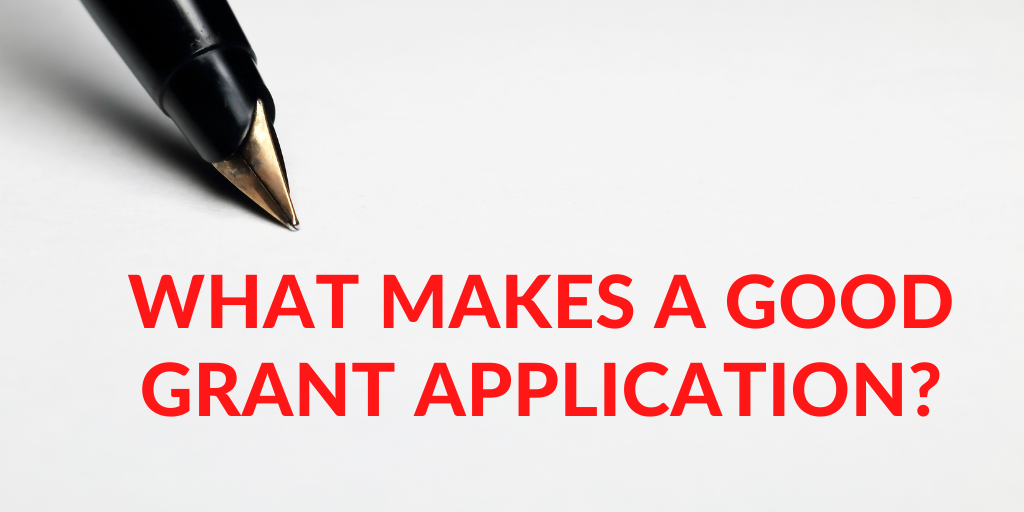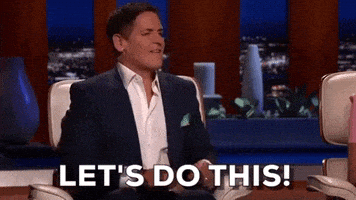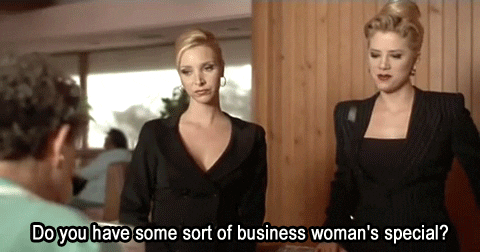When we first begin working with clients, many of them are struggling to understand why their grants haven’t been successful. All of our clients are creatives, many of whom write creatively, and so the confusion is compounded: why is my writing effective as a playwright, but not as a fundraiser?
This month, Benvenuti Arts team member, Adriana Rossetto – a writer, theater artist, and knitter (amongst other things!) – is taking the reins to talk about how she approaches grant writing, and what we believe makes a good and successful grant.
What is a Good Grant?
First of all, let’s define what a “good” application is, to start this journey in the right way and set tangible expectations. You might want to hear that a good application is the one that gets you the money, but the truth is that there are so many aspects that accompany an application that, unfortunately, it is not realistic to say that a good application will always get you a grant.
This is incredibly important to realize: you can write an amazing grant, and still not be selected for reasons that have nothing to do with your writing, project, or organization. There’s your relationship with the funder, your mission alignment with the foundation’s priorities of a foundation, if this is the right time within the timeline of a project to apply, as well as so many other factors that are outside of your control.
On the other hand, I think it’s reasonable to say that a ‘not-so-good application’ will absolutely impede your ability to be awarded the money, so a well-crafted application is still a fundamental step in this process, and one worthy of investment.
Be Prepared
The first step in writing a solid application is: set yourself up for success, which means STARTING EARLY. I cannot stress enough how much this matters. So many of us will either procrastinate, underestimate the amount of writing that goes into an application and/or the gathering of materials or unexpected documents that always pop up (bios that you need to gather, documents that need notarized, and where did we place that cute picture anyways?); it always takes longer than expected!
Not to mention that writing under pressure (the night before the application is due) is stressful as hell, and in the long run, you won’t feel like doing it again! Plan grant writing into your schedule as one of those rituals that you’ll have to do over and over again, which is part of building sustainable practices for your business.
How early? A month.
A month is plenty of time, which accounts also for all the times that you meant to sit down to write and then you stared at the screen for an hour as you had nothing to give to the page. THIS IS STILL WRITING, as frustrating as it is, because thinking is still an essential part of an application, even if it looks like you’re doing nothing.
Many of the grants that you’re looking at are released on a yearly basis, so building a calendar that accounts for due dates and “start writing” dates is key. Don’t let grants surprise you: many times you’ll hear of grants as they are approaching the deadline because that’s when everyone starts saying “this is due soon”. Generally speaking, you want to know of that opportunity earlier than that, which means that sometimes you might just want to make a note of that grant and look into it the next time it comes around.
At Benvenuti Arts, we keep calendars for all of our clients that lists the dates we submitted grants. That way, if Foundation X hasn’t released guidelines, but we can see that we submitted on February 1 last year, we know to start working on it around January 1 even if we haven’t heard from them.
Parts of a Good Application
In general, grant writing is a unique genre of writing that is both informative and inspiring. Whereas a pitch or an elevator speech tend to include just enough information for the audience to say “ah! That’s pretty cool, tell me more about it!”, grant writing is meant to paint the whole picture, so your reader can say “that’s actually really cool, here’s the money to make it real!”. One genre serves to get you into the room, the other presupposes that you’re in the room already.
Informative writing goes back to the famous Five W’s of journalism:
WHO:
Here you want to answer questions about the subject carrying out the project or the company. Are you an individual? A collective? A 501c3? What is your role in this project? If it’s a collaborative project, what brought you all together? What binds you together as a group? Here, it’s important to start planting the seeds that will help you answer the what question: the application should read “we are this and therefore we do this”. Foundations sometimes refer to this as “alignment” between the project and the mission – in writing, this is how it translates. It doesn’t always have to be this plain, with a logical link between subject and project (ie: “I’m a glass artist so I’ll be doing glass objects”); it can also be “we’re engineers and we’ll be writing a play about the mechanics of theatre.”
This is also totally valid as there’s an element of contrast between the subject and the project that produces drama, and therefore calls our attention (in this case, we’ll have to argue very well our 6th element, our how, to show that we actually have a sound plan despite the eccentric set up of the project).
WHAT:
What is the nuts and bolts of what you’re doing, and also the bulk of your writing. Here you want to answer questions about the event per se: if it’s classes, what are you teaching, if it’s a play, what is the play about, if it’s dance, what’s the choreography telling us, etc. In other words: what’s the story? The objective of this section is that the reader gets a clear picture of what you are doing. Quantify! Numbers within your narrative are your friends: how many artists are served doing XYZ? How many kids are impacted by this arts ed program? Help us have a sense of the dimension of your scope.
WHEN & WHERE:
I’m putting these together because they both add to the what and help you go deeper in describing the event, placing it in time and in space. These two Ws are super helpful in making the what a concrete thing: whereas in describing the project we can get carried away with the significance of it (the why), when and where bring you back to earth and place your feet on the ground. That’s why they separate the what from the why, because we can’t launch into the ultimate significance of a project if we don’t have all the elements to understand what the project is in the first place.
WHY:
Why is both your best friend and your worst enemy. It’s probably the most intimidating of the questions, that’s why we keep it last. This will be like water for many artists writing an application, as we probably start here when we’re inspired to build a project. That’s the place you want to get back to – what moved you in the first place to do all of the described above? What was the fire? But also, how will this affect change? In other words, what launched you, what propels you, where will this land you?
Needless to say, why covers the inspirational aspect of grant writing: speak passionately, speak from the heart – this is where the reader wants to see you.
Easier said than done, right? This is why you’ll want time to work on your application. So much of writing is rewriting, and you absolutely can’t write and edit in the same sitting. Think of this as a two step process: you’ll write and write and write in the first one, without censoring yourself, without worrying about word count, without being preoccupied with sounding foolish. Then you’ll put your draft away, and forget it exists for about a week. Then you’ll get back to it and read it again: you’ll want to edit naturally as somethings you jotted on the page were a product of that first moment, but you’ll find they have not stuck with you. The best solution is to delete those sections: many times shorter and clearer is better than long and over-involved.
The sixth element is HOW.
Well, this is the very reason you are writing the application in the first place. Money partly answers how you’ll carry out the project: what will you use the money for? How will the donation be applied? If the money you’re requesting is not enough, how will other aspects of the project be funded? Do you have in-kind donations? Are collaborators contributing to parts of the project? Are there any other applications out there you’re waiting to hear from, or are you making a plan to apply to them (specify whom and to what amount)? Is there an individual campaign in the making? Is the board contributing to the project? So many aspects of the how are told in the budget, that’s why budgets are so important.
Of course not all applications will want to be structured this way, and you’ll be answering the questions proposed by the application anyway, so that will dictate much of the arrangement of your writing. Generally, all foundations will want to know this information, independently if they ask in one way or another. Ideally, you are building a boilerplate for yourself where all this information is written on your own terms, and you can go back and adapt to the single questions of whatever application comes around: this also goes into building sustainable practices for your business – the second, third, fourth application won’t take as much time as your first one, I promise.
Final Step
Final word is: celebrate every step of the way. Sending in an application should be celebrated as a feat per se. This is work! Don’t value it only if it gets you a grant! Be radically independent from funders, and determine your own price tag!
You should be writing and having a return on your investment of time independently from the response that results from it. Grant writing will help you clarify your objectives, determine what the project is, understand if there are aspects you didn’t consider… in other words, it’s a practice that you’ll want to do for your own growth.
And once it is on paper, you can definitely use that language (with tweaks, of course) for your website, or marketing materials, or meetings with collaborators or prospect donors. Our team member, Rosalind, said this better than I did, but there’s always a part of this process where you just have to say “it’s enough, it’s done!”. That high is enough in and of itself: celebrate it, call a friend and talk about your insight, share it with your collaborators. Work for yourself, not the system.
And… a little extra advice from the team!
Julie: Find yourself a second reader! Having a second reader on your application is invaluable. They can tell you if your language reads as you intended, and clearly answers the questions the foundation has asked. While someone inside the organization works, it can be even more helpful if this is someone OUTSIDE your the org – a trusted person or a consultant! This means that your second reader is not as familiar with your work, mimicking the foundation itself. This can help you clarify certain elements of your app that you thought seemed obvious (because you’re so close to it!) but actually aren’t.
Sarah: As Adriana noted above, each funder asks their own specific questions, making it challenging to work from your boilerplate. When I begin writing, I look at the entire application and the required supplementals like a storyboard. I can cut up my boilerplate language and put the pieces in the appropriate sections, ensuring I don’t repeat language and that all of the w’s are included, no matter the format. I can then flush the language out from there. Please keep in mind: your supplementals are part of this story! Make sure they correspond directly with whatever is in the narrative.








This is SO GOOD. I would congratulate Sarah, but clearly this is the independent genius of Adriana (and Julie… and Rosalind…) — which just happens to fit in with the overall BENVENUTI ARTS mojo.
I love the elevator speech definition and distinction.
The simplicity yet essentialness of the Who, the What, the When, the Where, and the How.
Best of all, the water, fire, inspiration, passion of the Why. Without which…
Thanks.
Top notch.